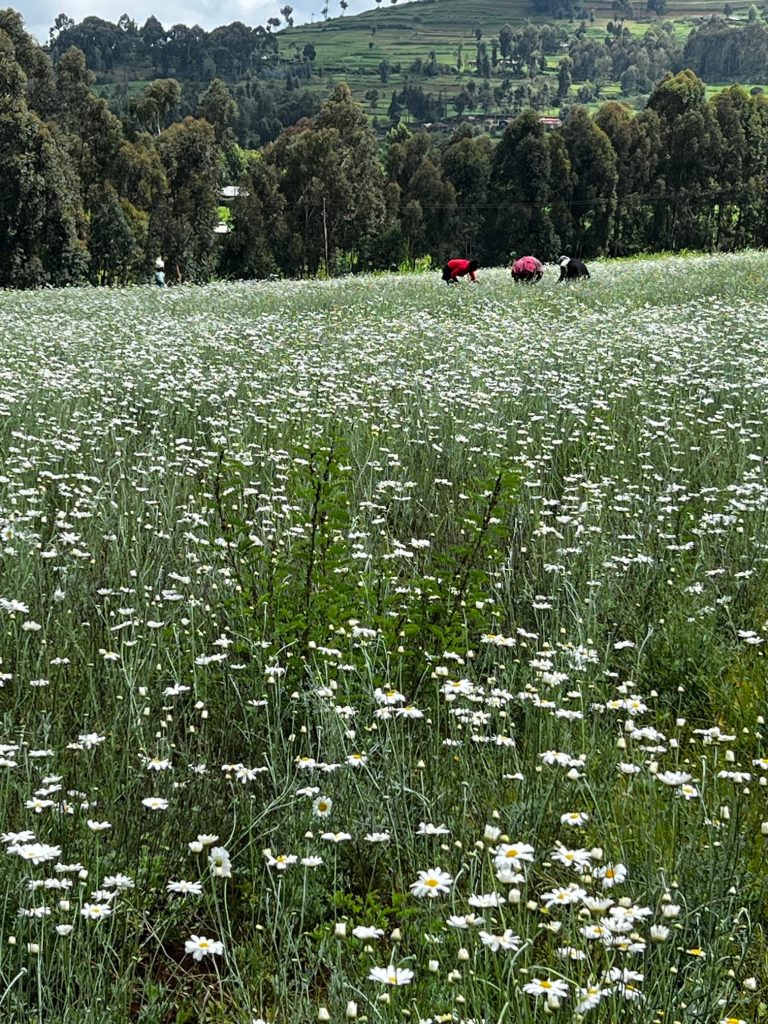Weed Control
- When weeding, the soil should be drawn around the base of the plants.
- Uprooted weeds should be removed from the field to avoid re-growth.
Hand Weeding
- Pyrethrum fields must always be kept clean, particularly when plants are young. Weeds can drastically reduce flower yields by interfering with tiller development and should therefore be carried out frequently (every 4 weeks) using small forked jembes to avoid root damage.
- Damaged roots may result in die-back of the plants and will increase during the rainy season.
Cutting Back
- Pyrethrum plants should be cut back once a year, towards the end of the dry season, after picking the flower flush.
- A sickle (never a panga) should be used to remove all the stalks, but not the leaves (cutting should be slanting to allow spillage of water).
Pests
Pyrethrum Thrips (Thrips nigropilosus)
- Tiny, yellow insects approximately 2-3 mm long. An outbreak occurs during a dry spell.
Green peach aphids (Myzus persicae)
- Green peach aphids attack young shoots, leaves and stems.
Red spider mites (Tetranychus hudeni)
- Yellow in young stage but dark red in old stage. Population of mites can increase to large numbers especially during dry season.
Diseases
Root knot nematodes
- A parasite in the soil that infests plant roots and no complete cure so long as the pyrethrum is in the ground. Recommended clones and varieties are tolerant to nematode attack.
Root Rot
- Root rot disease is caused by several fungi mainly of the Fusarium. To avoid this, only healthy plants should be used for splitting. Dipping of splits in a fungicide such as Ridomil will reduce the spread of the disease.
Bud Disease
- The true bud disease is caused by a group of fungi (Ramularia bellunensis, Alternaria sp. and Aschochyta sp). These attack young buds and young flowers. Epidemic outbreaks occur during prolonged foggy and rainy weather conditions.
- The false bud disease is shown to be caused by flower nematode, Aphelenchoides ritsema-bosi. It attacks flower buds which then dry up completely along with a few millimeters of the stem.
- Wilt is a wide spread disease in many pyrethrum growing areas in Kenya. It is mainly a big problem in the lower altitude areas where the temperatures are comparatively high.



